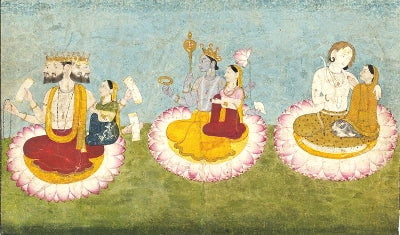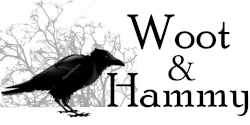What Does the Om Symbol Mean?
The Sound of Om
There's a sea of information that has already been written and spoken about this simple one-syllable, two-letter word. And that could be the easiest place to start, because it's really not a one-syllable word at all, or even two.
Although it's often thought that Om is pronounced to rhyme with “home”, the correct pronunciation of Om is actually made up of three syllables – or more accurately three distinct sounds: A U M
The first sound, A, is pronounced as a prolonged “aaah”, with the mouth freely open.
The second is U and is pronounced “ooo”, with the mouth partially closed.
And the third is M, pronounced “mmm”, with mouth completely closed.
It's traditional and most common to utter the three sounds in that order and without pausing between them.
Using one full exhale of breath, all three merge seamlessly from the first to last.
However, it is not unheard of to sound each individually; for example, A can be uttered alone repeatedly, then U next, and finally the same for M.
According to many practitioners of Om, these three sounds are believed to be the three most basic natural sounds a human can make - not even the tongue is needed to make them.
And from these three sounds all other sounds can be made, in much the same way that red, yellow and blue are the three primary colors from which all other colors can be created.
These sounds reside within your body from birth. In fact, babies utter them first, before more complex sounds and words are learned.
When uttered, these three sounds create vibrations within your body:
A will vibrate in the area of your navel or abdomen.
U will vibrate in your rib cage or chest.
M will vibrate in your throat and nose.
And it's the vibrations created in your body that are the most important thing about Om, because that is really what OM is about: Sound vibrations.
Sound vibrations
Why are sound vibrations important? There are at least two reasons.
First, many believe that everything in the universe, at every level – even things that to our five senses appear solid - is made up of energy, of which vibrations are a form.
In Hindu philosophy – where Om originated - the ancient Sanskrit word for this concept is “Prana” which means “life force”.
Today, even the modern science of quantum physics is for the most part in agreement with this concept of the universe being composed of energy rather than matter.
So one reason why the sound vibrations created by Om are important is because they provide a physical and spiritual link to the energy (and sacred nature) of the universe.
Another reason is that they improve well-being. The body's health - physically, mentally and spiritually – is regulated by its “chakras”.
The chakras are seven focal points of energy, from the base of the spine to the top of the head, that balance body, mind and spirit.
Practitioners generally agree that uttering Om opens and beneficially activates all seven chakras.
Mantras
This idea of creating sound vibrations as a means of achieving a higher consciousness is also contained within the term “mantra”, which is another Sanskrit term: “Man” denotes “mind” and “tra” means “instrument”.
That is why a mantra is often described as a tool for meditation.
Mantras were first composed by Hindus probably 3000 years ago and there are at least two basic types:
Some mantras, like Om, are universal; They can be used by anyone and they are able work for everyone.
Another type of mantra is one that is more personalized to the individual. These are traditionally given to the student by the master, based on something particular to the individual, like a birth date.
However, it's said that a person can also create his or her own mantra, so long as it achieves positive results.
In either case, a mantra is a sound that is uttered to help focus one's attention in order to achieve an altered, higher consciousness.
That's one reason why it's so often a part of spiritual activities such as praying or the reciting of sacred Hindu texts, when Om is chanted at the beginning and end of each chapter.
Many also feel that Om helps to make prayers more effective. Hindus consider Om the most sacred of all mantras.
What does AUM mean?
A U M : Why these three specific sounds?
Om is an ancient Sanskrit word and reflects the Hindu philosophy of One Reality – that Existence, Before-Existence, and Beyond-Existence are all one.
The Om mantra is sounded in various religions (such as Hinduism, Buddhism, and Sikhism) so that its meaning varies with each. But there seems to be a common thread:
The A sound signifies the beginning of the universe; birth; creation; and the waking state. It is the sound of Brahma, who is the god of creation in Hinduism and one of the three principal deities in the Hindu trinity.
U represents the sustained energy of the universe; life; and the dream state. It invokes Vishnu, who is the “preserver” and the second deity in the Hindu trinity.
M is associated with death, or the state of deep, dreamless sleep. It invokes Shiva, the third deity in the Hindu trinity. Shiva is the destroyer of the universe, but also a constructive power: Shiva destroys evil and imperfections in order to re-create a better universe.
It's traditional, after sounding A U M, to pause in silence in order to experience the nothingness. And this silence is referred to as “Turiya”, or Infinite Consciousness.
So within this sounding of OM, and its silence afterward, are contained the three states of divine energy that make up the cyclical transformation of the universe: First Nothingness, then Creation, and finally Destruction and its aftermath which is again Nothingness. Until the next cycle of creation begins.
And this is the cyclic nature not just of the universe, but of our bodies as well. As with our hair, blood, skin, fluids, cells, - i.e. everything that makes up our bodies - something is always dying and something is always being born, while some things remain the same.
A Little History
From this perspective it seems logical to theorize that Om may have developed in response to a basic human desire to know “Where did we come from and how do we fit into our universe?”
And like most religions, ancient Hinduism subscribed to the belief that everything began with a Divine Word.
As early as 1200 B.C., a collection of Sanskrit hymns were being sung to praise the Divine. It is believed that Om originated with these hymns. At this time, these hymns, including Om, were not written out, but only sounded.
Hundreds of years later, in the Upanishads - which is a collection of written sacred Sanskrit texts - there appears an entire chapter devoted to Om. According to one translation, it begins with: “OM! This Imperishable Word is the whole of this visible universe.
Its explanation is as follows: What has become, what is becoming, what will become – verily, all of this is OM. And what is beyond these three states of the world of time – that too, verily, is OM.”
So at some time after the ancient hymns mentioned above and before the Upanishads, the symbol or icon to represent Om was developed. In fact, in the Upanishads and many other sacred texts, it is often found at the beginning and end of each chapter.
The Om Symbol Meaning
Within Hinduism, the Om icon is one of the most important of Sanskrit symbols, and worldwide it is one of the most recognized of all sacred symbols.
For example, because it is often chanted at the beginning and end of yoga classes, many people think of it as a yoga sign.
But what specifically does the Om symbol mean?
Scholars believe it embodies both “Atman”, which is the Sanskrit word of the “true self” or “soul” of the individual, as well as “Brahman” which is the entirety of the universe.
It's composed of three curves, a semi-circle, and a dot or diamond, each of which is said to have significance.
The three curves represent the three sounds of Om, i.e. A, U and M. The dot represents Turiya, the silence after AUM. And the semi-circle is “Maya”.
Maya is the concept of mistakenly believing that the material world is real and not an illusion. This prevents us from seeing the true nature of ourselves and the ultimate reality.
There are also those who believe that the various curves of the Om icon reflect Ganesha, the Hindu deity who is worshiped as the God of New Beginnings and the Remover of Obstacles.
Ganesha is most often identified by his elephant head, so the curve on the right side of the symbol would be his twisting trunk.
A Few More Thoughts
It is generally agreed that Om is thousands of years old.
As is the case with anything that has existed for so long, it is inevitable that Om has evolved in many different ways and in many different directions.
Imagine the changes that could have occurred, some very subtle and others more dramatic, as Om was passed from one generation to the next, from one culture to another, from one religion to another, and from one language to another over the course of so many years.
For example, scholars have traced both the Christian word “amen” and its Muslim counterpart “ameen” back to A U M.
Today, there is general agreement among most people regarding the basic concept of Om.
But beyond that, there is much speculation, conflicting interpretations and opinions, and differing accounts, as well as missing information.
You probably already know that an internet search for "Om" or "What is AUM?" will yield a daunting spectrum of information.
And then there's all the related subjects and ideas that Om touches on and that shed light on what Om means.
There's enough information out there to overwhelm almost anyone, especially anyone who is a complete newcomer to the concept of Om.
It may enhance your appreciation of the ancient ritual of Om to keep all this in mind, but it's not necessary for proper AUM chanting.
Like yoga, which is believed to have developed in northern India 5000 years ago, the truest intent of Om is to achieve a higher awareness, to transform the mind from our daily, more practical consciousness to a more open and contemplative one.
Most Om practitioners feel that it's enough just to utter Om, because Om chanting benefits the body, mind, and spirit, leading to a deeper and more satisfying enjoyment of life.
This article is brought to you by Woot & Hammy - "Our mission is to be a place for Wiccans, Pagans, and others to find affordable, high-quality jewelry that will help them express themselves and their beliefs, and by doing so, help to expand awareness and acceptance of them and their communities." Click here to visit our site.
Image Credits
Ripples in water: Pixabay - No attribution required
Chakras diagram: By mpan [CC0], from Wikimedia Commons
Painting of Brahma, Vishnu and Shiva: https: Wikimedia Commons - Circa 1770; Author Unknown; Source V&A MuseumOrange
Om symbol in circle: Pixabay - No attribution required



207 Comments
The om symbol is a mirror of the mind’s journey. “The curves of the om symbolize the different states of mind,”
https://theyogamandala.com/what-does-the-om-symbol-mean/
wcoPRbAGimNDs
NCEpWJOse
BrCugKwoDJcYIXm